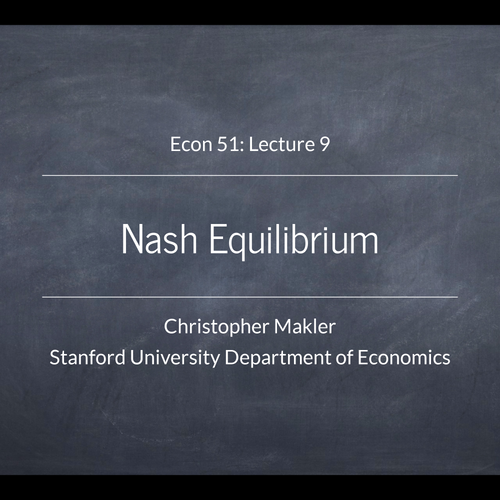Extra Review Session on Perfect Complements
Christopher Makler
Stanford University Department of Economics
Econ 50Q
Today's Agenda
- Preferences
- Utility Maximization
- Cost Minimization
Preferences
Preferences over Tea and Biscuits
Charlotte always has 2 biscuits with every cup of tea;
if she has a plate of biscuits and one cup of tea, she'll only eat two. (And if she has a whole pot of tea and 6 biscuits, she'll stop pouring after 3 cups of tea.)
Each (cup + 2 biscuits) gives her 10 utils of joy.
Which other bundles give her the same utility as
3 cups of tea and 4 biscuits (A)?
Which other bundles give her the same utility as
1 cup of tea and 4 biscuits (B)?
3
6
Any combination that has 4 biscuits
and 2 or more cups of tea
Any combination that has 1 cup of tea and
at 2 or more biscuits
4
5
1
2
3
6
4
5
1
2
A
B
Perfect Complements
Goods that you like to consume
in a constant ratio.
Left shoes and right shoes
Sugar and tea
Utility Maximization
IF...
THEN...
The consumer's preferences are "well behaved"
-- smooth, strictly convex, and strictly monotonic
\(MRS=0\) along the horizontal axis (\(x_2 = 0\))
The budget line is a simple straight line
The optimal consumption bundle will be characterized by two equations:
More generally: the optimal bundle may be found using the Lagrange method
\(MRS \rightarrow \infty\) along the vertical axis (\(x_1 \rightarrow 0\))
Tangency condition: set MRS = price ratio
Constraint:
Two equations, two unknowns;
solve like you always have!
What do we do for perfect complements?
Intuition: utility-maximizing point will always be at the "base of the L" - otherwise you're paying for things that bring you no utility
"Ridge condition"
(just like a tangency condition)
Plug into the budget constraint:
What do we do for perfect complements?
Intuition: utility-maximizing point will always be at the "base of the L" - otherwise you're paying for things that bring you no utility
Q: What is this?
Intuitively: "buy as many bundles of \((a,b)\) as you can."
A: The cost of buying \(a\) units of good 1
and \(b\) units of good 2
Q: What is this?
A: The maximum amount of
(\(a\) units of 1, \(b\) units of 2)
you can buy with income \(m\)
Cost Minimization
Econ 50Q | Review of Perfect Complements
By Chris Makler
Econ 50Q | Review of Perfect Complements
Characteristics of Utility Functions
- 35



